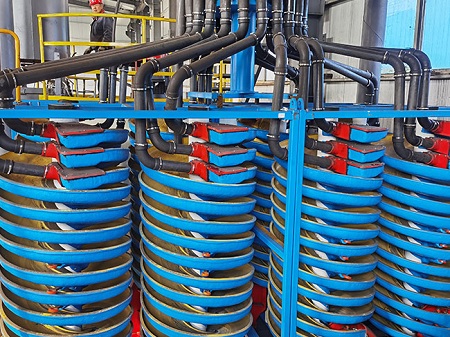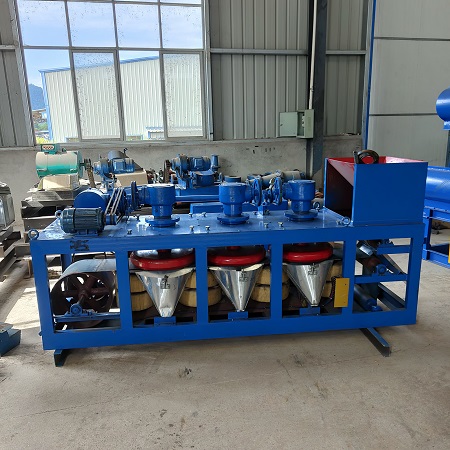

Coastal sand contains abundant valuable minerals, with zircon and ilranite being key targets for recovery. To improve comprehensive resource recovery, industry often adopts a combined process integrating gravity, magnetic, and electrostatic separation. This approach enables efficient and precise mineral separation. The process mainly consists of five stages: washing and screening, chute gravity separation, shaking table concentration, magnetic separation, and electrostatic separation.
The raw ore first enters a trommel screen for washing and screening. This step removes surface impurities such as clay and organic matter, and classifies the material by particle size, providing suitably graded ore sand for subsequent gravity separation.
The screened fine-grained ore sand is fed into a spiral chute. Utilizing the density differences between high-density minerals like zircon and ilmenite and low-density gangue minerals, the combined effects of water flow, gravity, and centrifugal force cause the high-density minerals to concentrate along the inner edge of the spiral, achieving preliminary separation.

The rough concentrate obtained from chute gravity separation is further refined using a shaking table. The shaking table effectively separates low-density gangue minerals such as silica sand, enhancing the grade of valuable minerals like zircon and ilmenite to produce a mixed concentrate.
The mixed concentrate is dried and then processed through a three-disc magnetic separator for magnetic separation. By precisely adjusting the magnetic field intensity, weakly magnetic minerals like ilmenite can be effectively separated from non-magnetic minerals (e.g., zircon), enabling the recovery of ilmenite.

The non-magnetic product after magnetic separation mainly includes minerals such as zircon, rutile, and tin ore. Using a high-voltage electrostatic separator, minerals are further separated based on differences in conductivity, ultimately purifying non-conductive or weakly conductive minerals like zircon.
This combined gravity-magnetic-electrostatic separation process offers high separation efficiency, excellent recovery rates, and environmental friendliness with no pollution. It has become a mainstream technology for the comprehensive utilization of zircon and titanium resources in coastal sand, providing a reliable method for the efficient recovery of zircon and ilmenite.